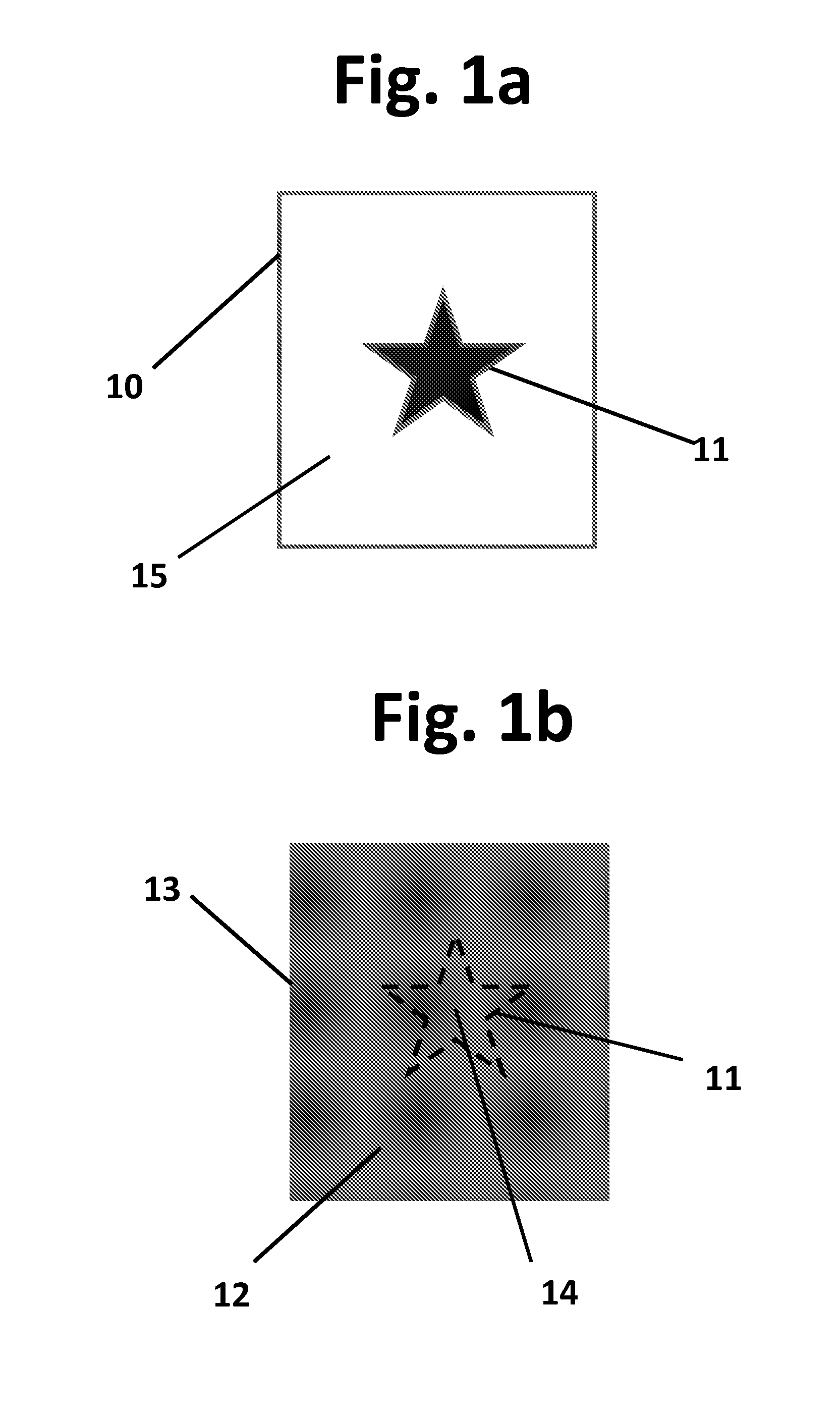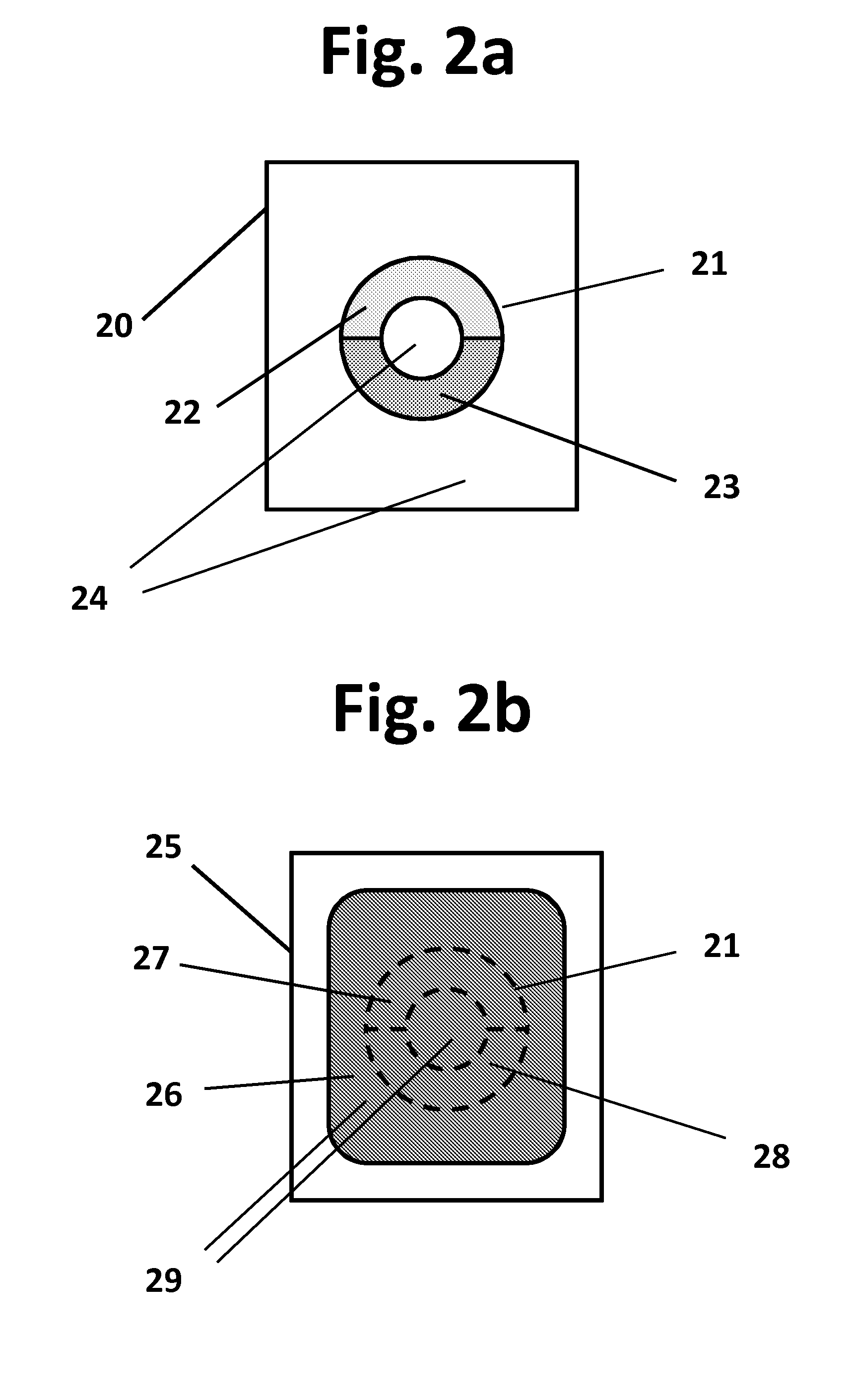Method of Printing a Conductive Article and Articles Made Thereby
a technology of conductive articles and printing methods, applied in the field of printing methods, can solve problems such as conductivity levels
- Summary
- Abstract
- Description
- Claims
- Application Information
AI Technical Summary
Benefits of technology
Problems solved by technology
Method used
Image
Examples
examples
[0116]An image consisting of a stepwise gradient of six adjoining blocks corresponding to about 5, 20, 40, 60, 80, and 100% gray is printed using a laser printer onto plain printer paper. The six blocks and unimaged sections of the paper sheet are overcoated with a coating comprising graphene sheets, graphite, an acrylate binder, and solvent using a #28 wire rod. The coated paper is dried at about 125° C. for about 4 minutes. The surface resistivities of each block as well as sections of the paper that are not printed with toner (indicated as 0% gray) are measured using a four-point probe. The results are given in Table 1. The degree of coating adhesion to the substrate is directly proportional to the percentage gray on the image.
TABLE 1Surfaceresistivity% Gray(Ohm / sq)020526203040426057806010067
PUM
| Property | Measurement | Unit |
|---|---|---|
| Specific surface area | aaaaa | aaaaa |
| Specific surface area | aaaaa | aaaaa |
| Specific surface area | aaaaa | aaaaa |
Abstract
Description
Claims
Application Information
 Login to View More
Login to View More - R&D
- Intellectual Property
- Life Sciences
- Materials
- Tech Scout
- Unparalleled Data Quality
- Higher Quality Content
- 60% Fewer Hallucinations
Browse by: Latest US Patents, China's latest patents, Technical Efficacy Thesaurus, Application Domain, Technology Topic, Popular Technical Reports.
© 2025 PatSnap. All rights reserved.Legal|Privacy policy|Modern Slavery Act Transparency Statement|Sitemap|About US| Contact US: help@patsnap.com



